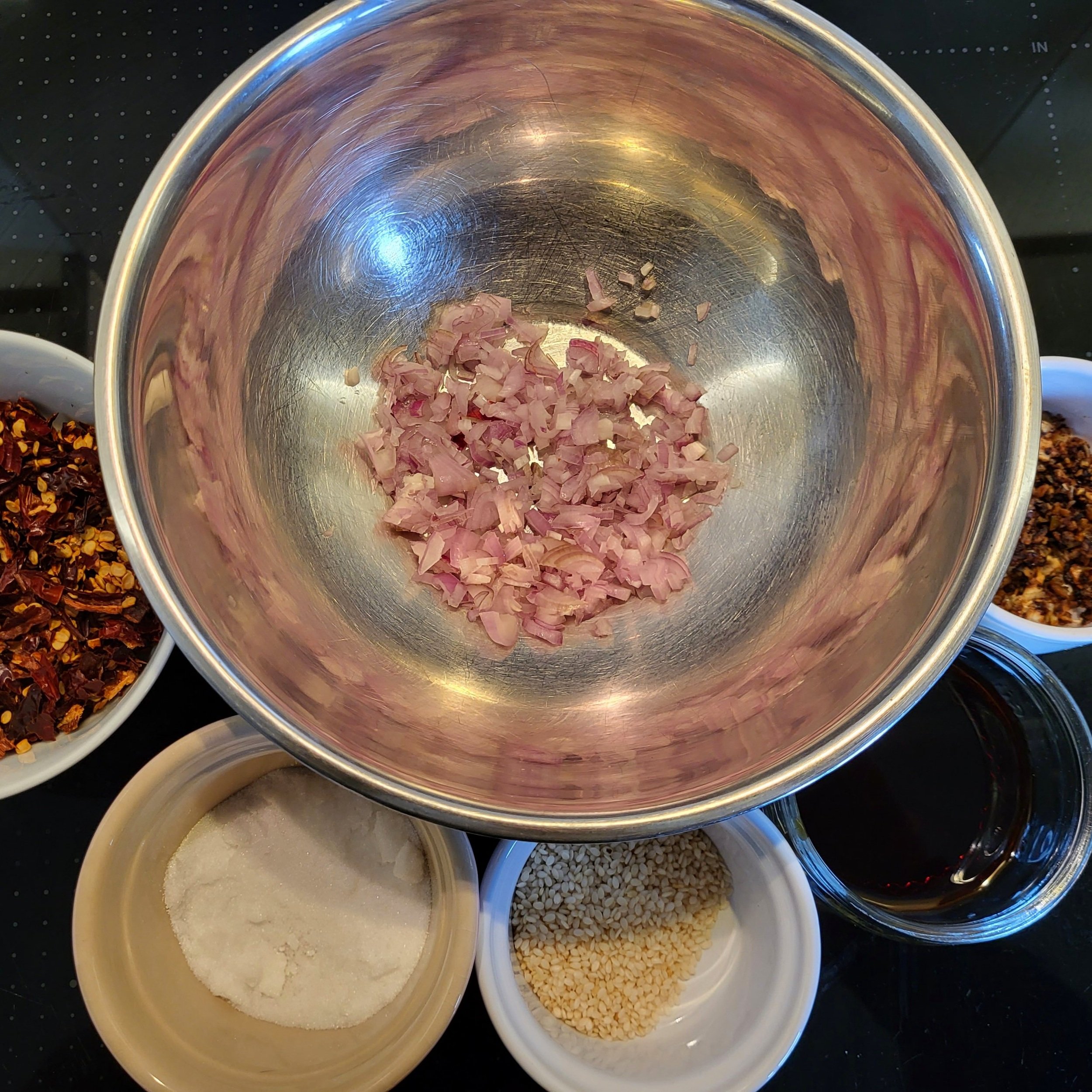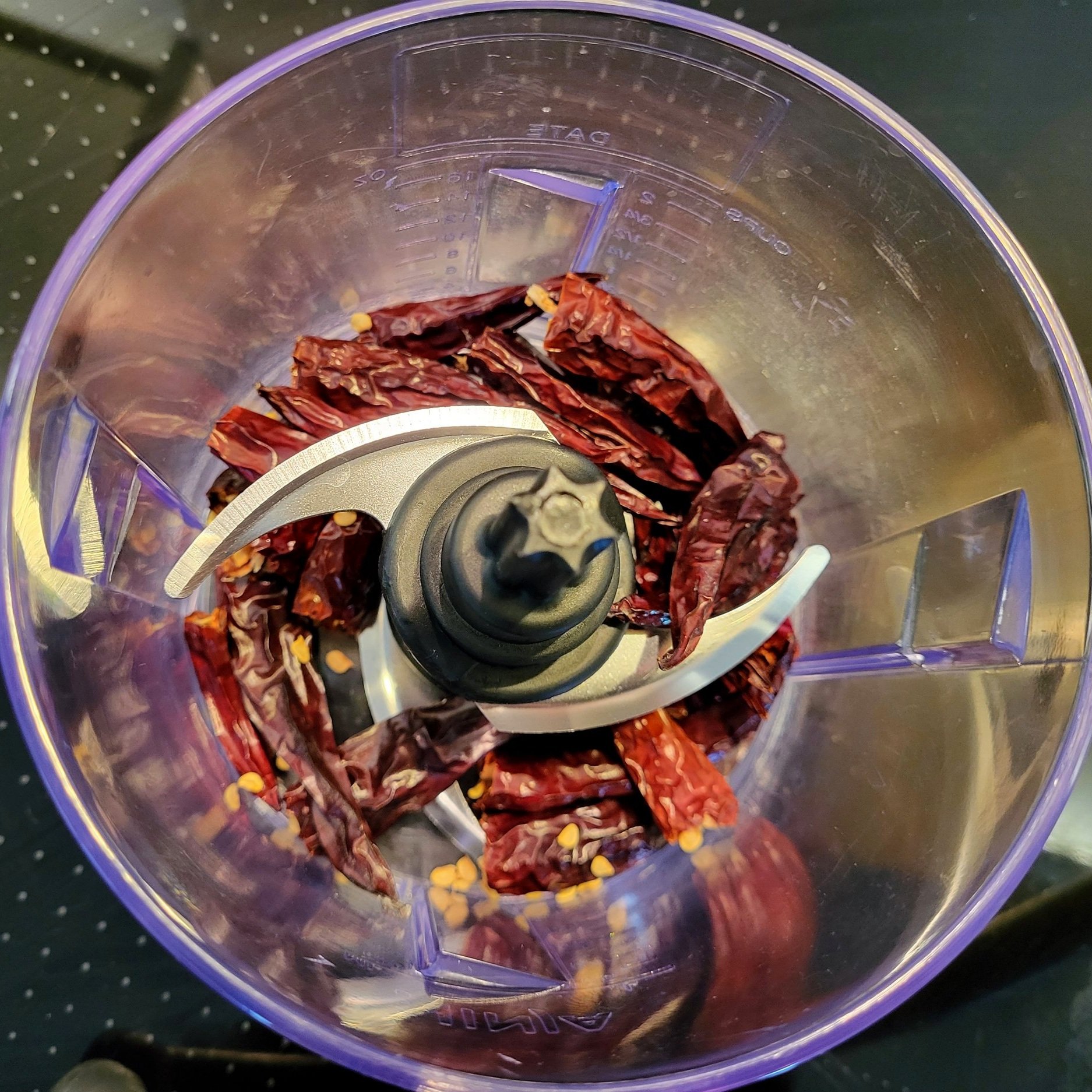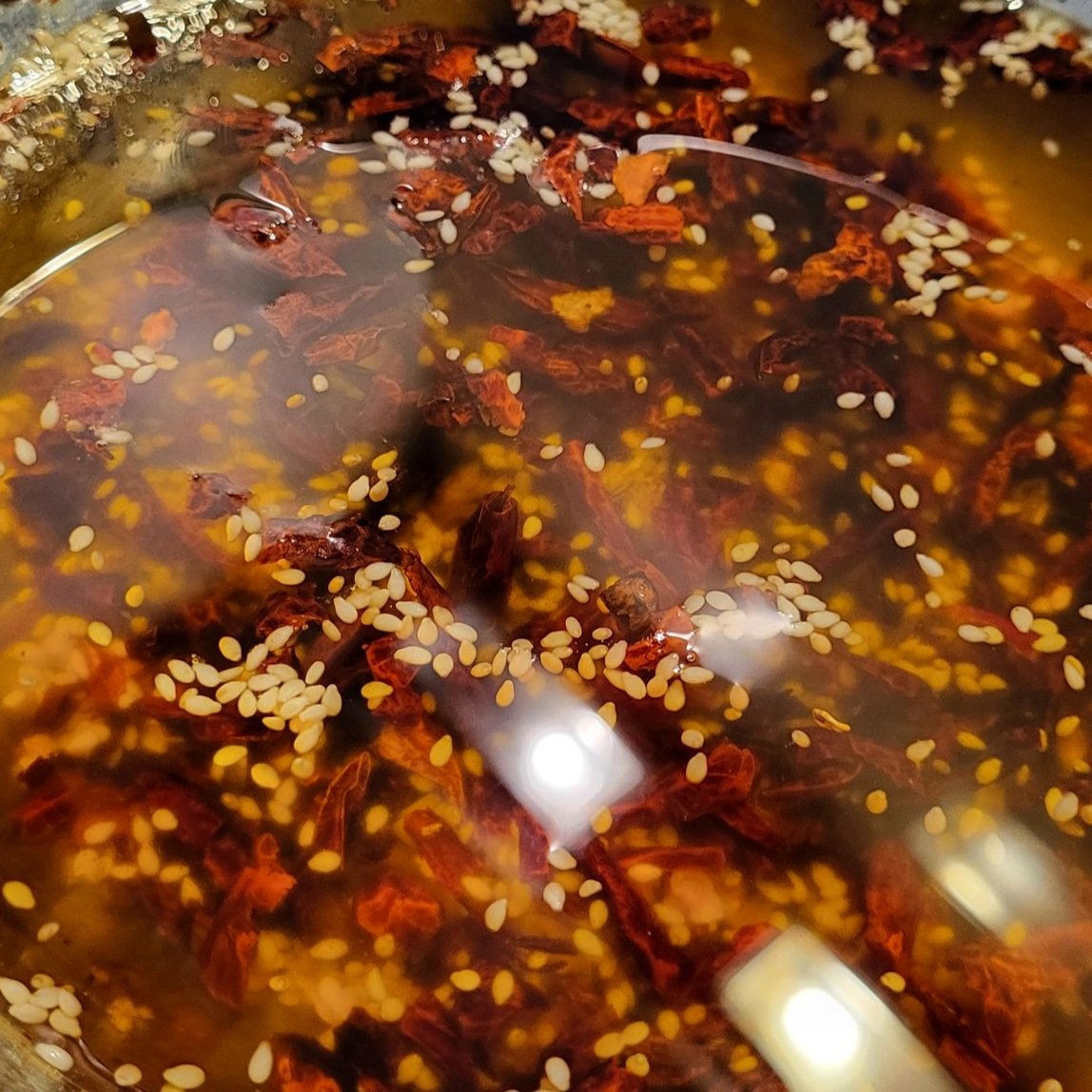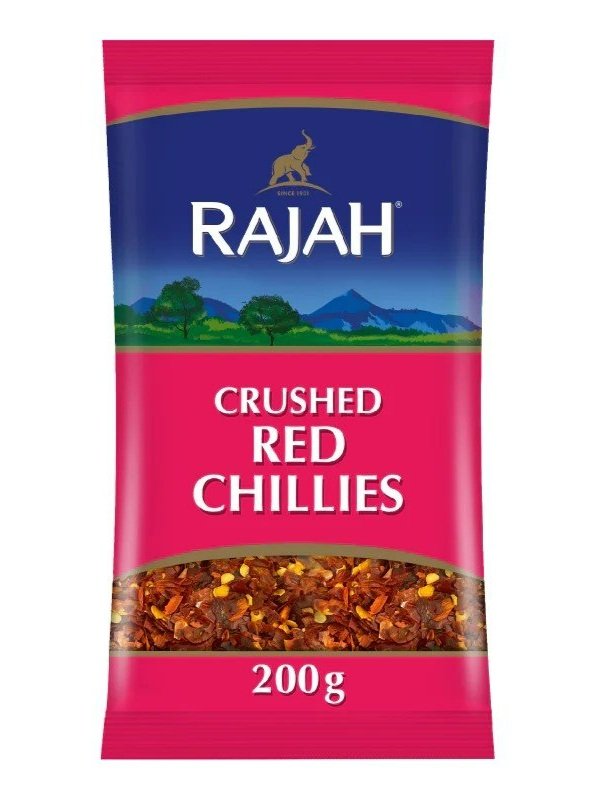How to make Chinese crispy chilli oil
This recipe contains affiliate links to our partner Rajah Spices and Amazon. Any purchases made after clicking these links does provide Cook, Eat, Repeat! with a small commission which we use to help continue the funding of the site. All our opinions are our own, and we only recommend brands we trust and have used repeatedly ourselves.
"Chillies are like teenagers. You think you know them, and then they surprise you." - Adam Schihab
What is Chili Crisp?
Chili crisp (or Chilli Crisp) is an oil is used in a variety of Asian cuisines and recipes, everything about this recipe is customisable, from the heat level, through to the crispy garlic to using peanut oil or vegetable oil. This means it's fun to experiment with the recipe once you have the basics right.
There are some great brands available ready made on the market including my favourite Lao Gan Ma. But homemade chili crisp is easy to make and very quick.
When trying this recipe out, we've experimented with fresh chillies (very mild but fruity result), dried chili flakes from Rajah (absolute beast, but really nice) and chili powder (didn't work!). Ultimately what type of chilli you use will reflect the resulting spice level.
When we're making a homemade version of chili crisp, we always aim for a balance between heat and sweet, it's such a deep complex flavour combination that sometimes it's easy to overdo the heat and then that hides all the other super tasty ingredients.
We usually add a tablespoon of chili crisp at the end of a ramen, or on dipping bites like dim sum, plus it's great just stirred into noodles.
Sometimes when no ones looking, it's perfect straight off the spoon!
Equipment Required for Crispy Chilli Oil
A food processor or better yet a Ninja Professional Chopper - we have one of these and it’s exceptional
A really well-balanced chopping knife or set from Global
The perfect small saucepan - it has to be Le Creuset, everything they make is quality!
Directions on how to make chilli oil
Ingredients:
200g x Rajah chilli flakes (or dried chillies if you have them)
300ml x oil - (vegetable or peanut)
1 tbsp x salt
1 tbsp x sugar
5 x cloves garlic, peeled and halved if the cloves are large
1 x small shallot, finely chopped
1 x tbsp sesame seeds
1 x tbsp soy sauce
Instructions:
Place the garlic on a baking tray and put in an oven preheated to 200c. Roast for around 15 minutes until the garlic has turned golden brown, softened and caramelised.
If using whole dried chillies, trim the tops off and then place them (seeds and all) in a blender (we recommend the ninja stackable 200w chopper which is used everyday in our kitchen) or food processor. Whizz them until they become chili flakes.
When the garlic is done, remove from the oven and slice finely
In a metal bowl, pour in the chilli flakes, garlic, finely sliced shallots, salt and sugar. Mix together well. If you're experimenting you can also add peanuts or cashews, star anise, a small cinnamon stick
Heat the oil to 200c in a pan over a medium heat, once it reaches temperature (carefully!) pour the oil into the metal bowl on top of the ingredients. It will sizzle and foam up, so if it is a shallower bowl, be careful it doesn’t spill over.
Let the foam and sizzling die down, then pour in the soy sauce and sesame seeds.
Stir and allow to cool
The chilli oil is now ready to place in a sterilised jar (or jars)!
Which chilli flakes to use?
We like to have consistent heat through our chilli oil so we know when we make it, how much it will blow our head off! If we don’t have homegrown chillies then we only use Rajah crushed red chillies as they are hot, but not scary hot and work really well with the sugar and soy in the recipe. The bags are easy to handle, and easy to store.
Rajah are also a quality brand, which means you don’t need to worry about food fraud (cheap brands cutting their spices with something else) when you buy anything from their range.
Song for this recipe:
Give it away now - Red hot chili peppers
Audiobook for this recipe:
Red Sorghum - Mo Yan
How long will homemade chilli oil last?
Chinese chilli oil can last quite a long time depending on how it is stored. If you have suitable air-tight jars that can be sterilised, the oil can remain good for up to six months if stored in the fridge. If you don’t have sealable air tight vessels, then you will only be able to keep it for around two to three weeks.
In our experience, however, this oil tastes so good that you won’t be able to keep your hands off it for that long!
Can you use fresh chillies in chilli oil?
In our experience you can! However, although that’s the short answer, you will find there is a completely different flavour profile from fresh chilli than dried. As they dry out, the chillis start to develop more heat and a deeper, earthier flavour than when fresh - which tends to be fruity. This means that the oil you make adds to the umami taste rather than sweetens it or changes the profile in other ways. The oil is there to add to, rather than overpower, the dish.
If you are using fresh chillis then you are better making a chilli sauce or a dip as that is often combined with blander foods such as chicken dippers or breadsticks, so a punchy flavour is perfect here.
Is chilli crisp the same as chilli oil?
These are very similar in their ingredients and the flavour profile at the end, however the texture is different between them. A chilli crisp is packed with other elements such as peanuts to give a much crunchier consistency and there is less oil. Chilli oil in contrast is usually strained and all the ingredients removed. Our recipe above is a blend of both, more oil than a classic chilli crisp (or Lao Gan Ma in Chinese), more crunch than a classic chilli oil. So it can be used for both.
In their basic formats, chilli oil is used as a seasoning, while chilli crisp is a condiment to compliment noodle dishes such as ramen.
How do I sterilise a glass jar?
There are four different ways to sterilise jars effectively at home:
Boiling Water Method:
Clean the jars and lids with hot, soapy water and rinse them thoroughly.
Place the jars and lids in a large pot, making sure they are fully submerged in water.
Fill the pot with enough water to cover the jars by at least one inch.
Bring the water to a rolling boil and maintain the boil for at least 10-15 minutes.
Use tongs to remove the jars and lids from the boiling water, allowing excess water to drain.
Oven Method:
Preheat your oven to 110°C.
Wash the jars and lids in hot, soapy water, and rinse them well.
Place the jars on a baking sheet, ensuring they do not touch.
Put the jars in the preheated oven for about 10 minutes.
Remove the jars carefully using oven mitts or tongs. Do not touch the inside of the jars or lids.
Dishwasher Method:
Ensure your dishwasher is set to the hottest cycle.
Load the clean jars and lids into the dishwasher and run a full cycle.
Once the cycle is complete, remove the jars and lids immediately to prevent contamination from the surrounding air. Be cautious as they will be hot.
Microwave Method:
Note that this method is suitable for small items like lids or smaller jars.
Place the cleaned jars or lids in the microwave and add a cup of water.
Heat on high for 1-2 minutes or until the water begins to boil.
Carefully remove the items using oven mitts or tongs.
What recipes can I use my homemade chilli oil in?
Try these recipes from our site!
Corn Chowder:
Drizzle the oil over at the end of cooking to add heat and an Asian flavour.
Smoky Cashew Dip:
Add the oil to the blender with the cashews instead of the chilli flakes to add more heat and a different consistency.
Pork Gyros:
Drizzle over the flatbreads while adding the filling





